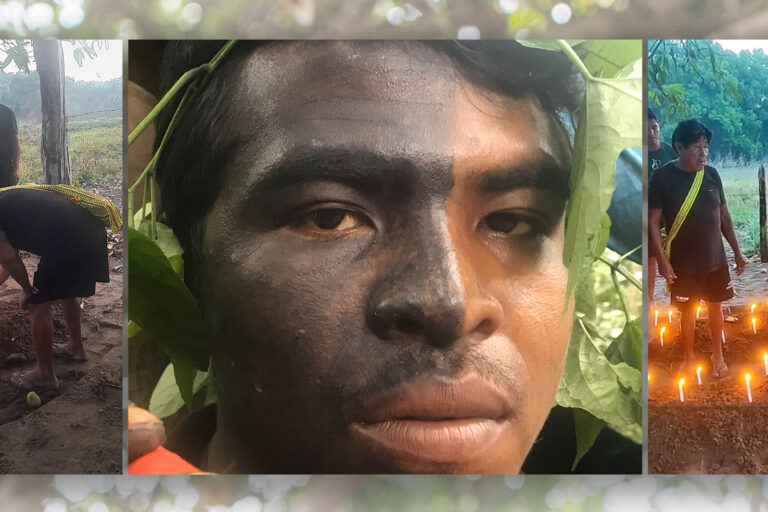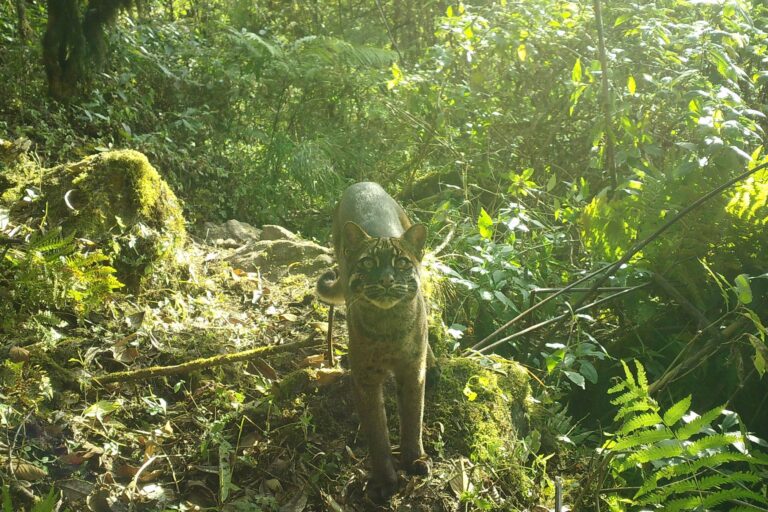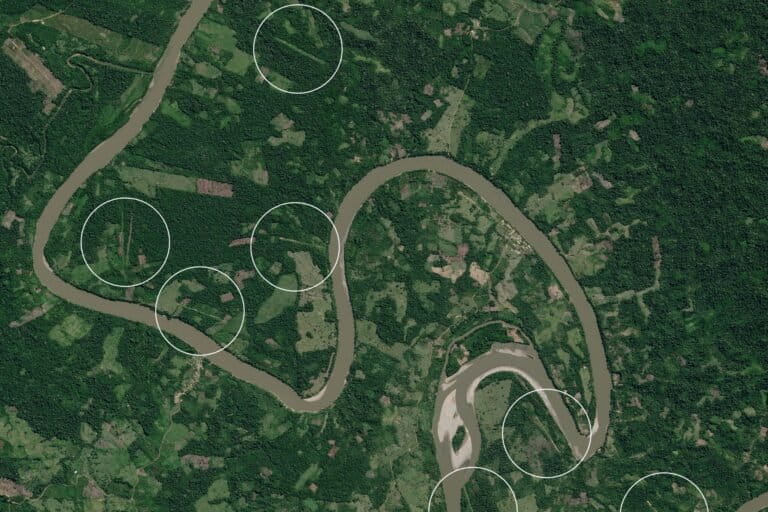- At the IUCN World Conservation Congress in Marseille, France, Indigenous leaders and conservationists called for support of their effort to protect 80% of the Amazon Basin by 2025.
- Scientists say the Amazon region has already lost 17% of its forest cover and that an additional 17% has been degraded by forest loss, fragmentation, wildfires and drought, and that these pressures are pushing the rainforest toward a critical tipping point.
- While the recognition of Indigenous land rights would be a critical first step, experts say that Indigenous communities need support in enforcing their land rights and their efforts to defend the Amazon.
- A motion that would support area-based conservation targets with the view to protecting at least 80% of the Amazon by 2025 was eventually approved by the IUCN World Conservation Congress.
UPDATE 09/10/2021: Today, members of the IUCN World Conservation Congress approved the motion that calls to protect 80% of the Amazon by 2025, a move that is being celebrated by Indigenous peoples, conservationists and scientists. Sixty-one governments and government agencies, and 600 NGOs and Indigenous peoples’ organizations voted in favor of the motion. While there were some abstentions, no party voted against the motion.
MARSEILLE, France — Indigenous leaders and conservationists are asking for support in a critical effort to protect 80% of the Amazon Basin by 2025. According to scientists, the region is rapidly approaching, or has already reached, a tipping point that would push the rainforest into a savanna-like state that most likely cannot be reversed.
Members of the Coordinator of Indigenous Organizations of the Amazon River Basin (COICA by its Spanish acronym) and numerous other bodies and organizations are asking for the support of the leaders and members of the IUCN, the global conservation authority, to vote in favor of a motion that would support area-based conservation targets with the view to protecting at least 80% of the Amazon by 2025, and to halt deforestation and land use change and restoring damaged forest areas. They are also asking for the IUCN to ensure that Indigenous leaders are permitted to govern and manage new protected areas, as set out in the Durban Accord that was adopted by the IUCN in 2003.
At a press conference that took place Sept. 5 at the IUCN World Conservation Congress in Marseille, France, José Gregorio Díaz Mirabal, general coordinator of COICA and member of the Wakuenai Kurripaco people of Venezuela, made an emotional speech, asking for the world to stand alongside the Indigenous peoples who are already defending the Amazon “with our lives” and “with our blood.”
“We want to tell the world that we need to wake up and save the planet,” Mirabal yelled into the conference room in Spanish. “We are also here to demand that this World Congress … show whether it really stands with Indigenous peoples. Prove with your vote.”
Brazilian climate scientist Carlos Nobre, a leading expert on the Amazon, said the region has already lost 17% of its forest cover, and that an additional 17% has been degraded due to logging, wildfires, and climate change-induced drought. All of these factors are pushing the Amazon increasingly close to a tipping point, Nobre said, adding that large portions of the Amazon, mainly the southern and eastern sections of the rainforest, will likely cross the tipping point if these pressures continue.

“There are some scientists that think that portions of the rainforest in the southern Amazon may have reached the tipping point because they are observing a higher mortality rate of wet-climate tree species,” Nobre told Mongabay by email. “However, at any rate, we must stop deforestation, forest degradation and wildfires right now and restore large portions of deforested and degraded forest at least to contain the tipping point that can affect more than 50% of the forest area.”
Nobre said it would be very difficult to reverse a tipping point once it has been crossed, since such a reversal would largely depend on the immediate cessation of deforestation, forest degradation and wildfires, and bringing atmospheric CO2 concentrations back down to less than 350 parts per million, “something that seems almost impossible to happen during the century.”
A recent study published by the Monitoring of the Andean Amazon Project (MAAP) shows that over the past two decades, the Brazilian Amazon has been transformed from a carbon dioxide sink into a net source of emissions, releasing 3.6 billion metric tons more CO2 than it absorbed during the last 20 years.
Alain Frechette, of the Washington, D.C.-based NGO coalition Rights and Resources Initiative, says the parts of the Amazon in which Indigenous peoples have secure land rights are the areas that are most effectively preserved.
“Those areas are islands of green,” he told Mongabay in an interview at the IUCN Congress. “But we need to extend them, make them bigger, and recognizing their rights, all of their customary lands and traditional lands is … the best solution to achieving those outcomes.”
Frechette said that protecting 80% of the Amazon cannot be achieved with the legal recognition of Indigenous land rights alone, and that Indigenous peoples will need support to enforce these rights.
“If you have a house or a home, we count on the police to enforce our land rights,” he said. “In most cases in … the Amazon, they can’t [rely] upon authorities to enforce their rights. Authorities will not do it, and so they are left to defend it by themselves. So without added support to allow for enforcement of rights … and even support for their livelihood needs and payments for their ecosystem services … these communities are at risk.”

Frechette added that the goal of 80% protection of the Amazon sends an “important political statement” and a “common challenge that [the] world needs to work towards.”
On Sept. 7, the motion to protect 80% of the Amazon was approved for a vote by members of the IUCN Congress, although the date for the actual vote has not yet been set.
“For us it is a concrete proposal to protect, defend, conserve and fight [for the Amazon] because our territories cannot continue to be destroyed,” Mirabal told Mongabay in Spanish on Sept. 7.
“We are inviting governments, environmental nongovernmental organizations, and everyone to join us for the Amazon. We hope that this will be a mandate that the congress approves and demonstrates that conservation is not at odds with rights.”
Banner image caption: José Gregorio Díaz Mirabal, general coordinator of COICA and member of the Wakuenai Kurripaco people of Venezuela, speaking at a press conference in Marseille, France.
Elizabeth Claire Alberts is a staff writer for Mongabay. Follow her on Twitter @ECAlberts.
FEEDBACK: Use this form to send a message to the author of this post. If you want to post a public comment, you can do that at the bottom of the page.














